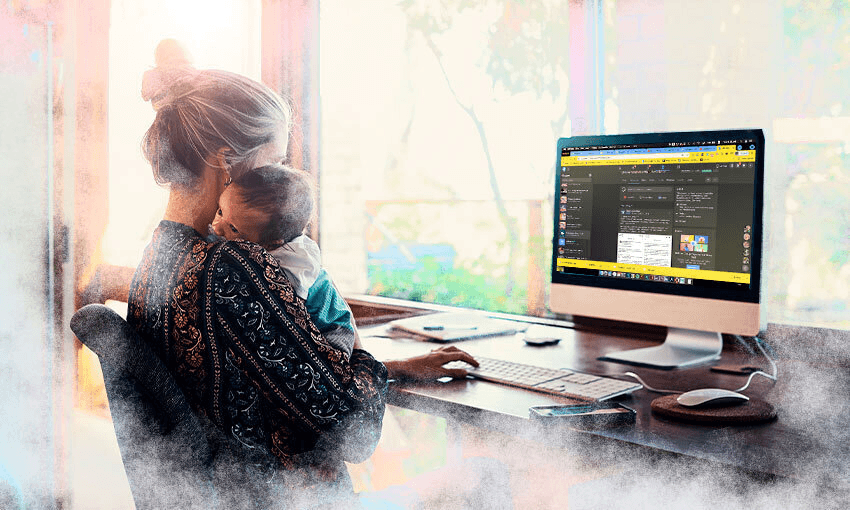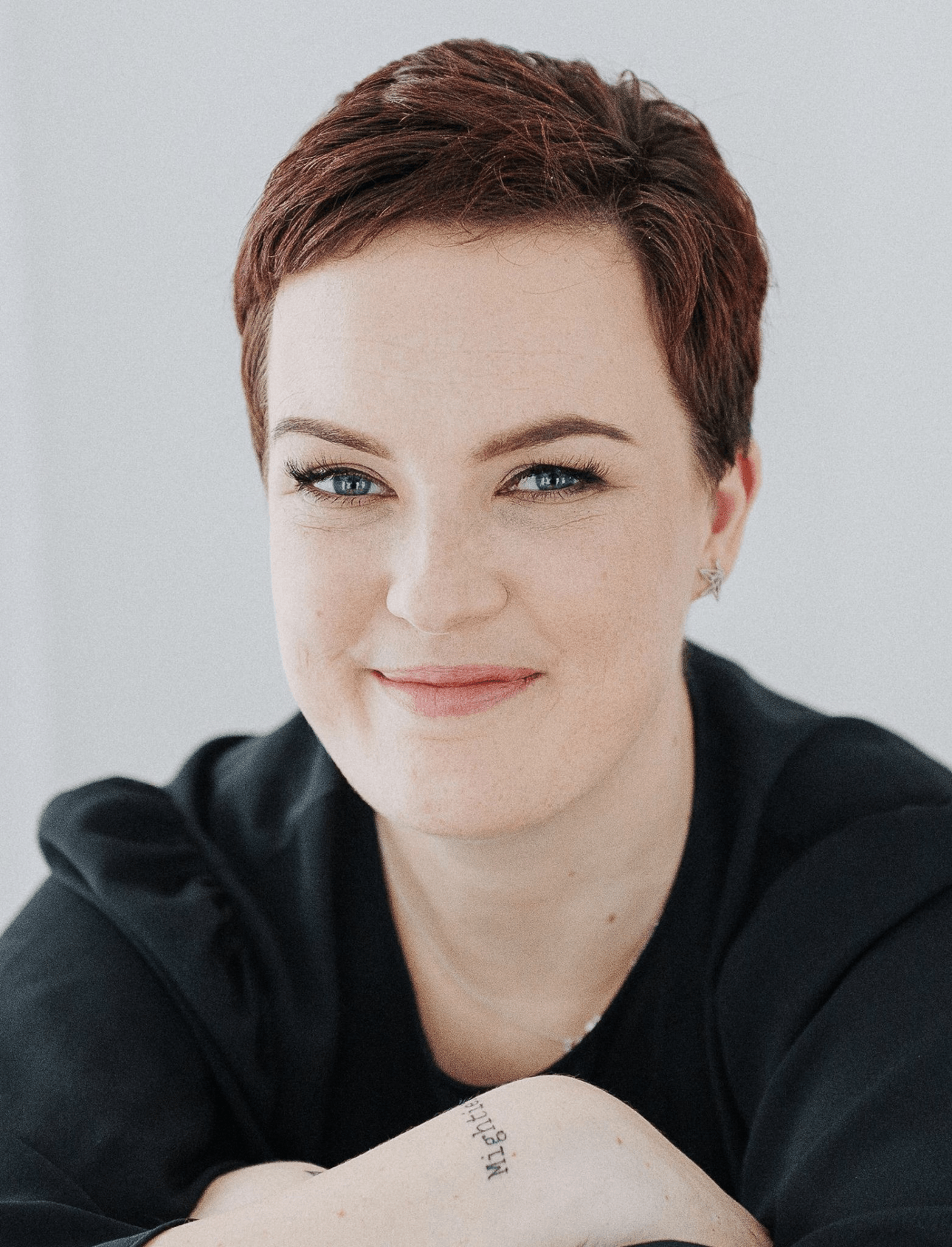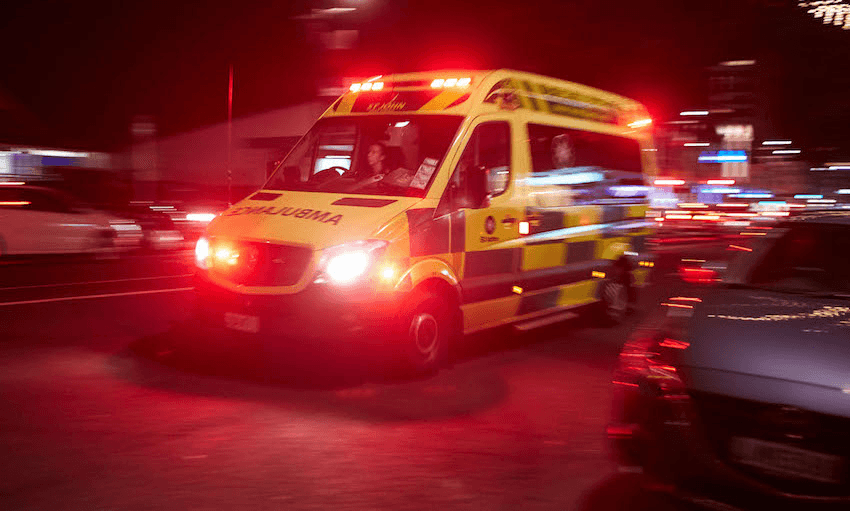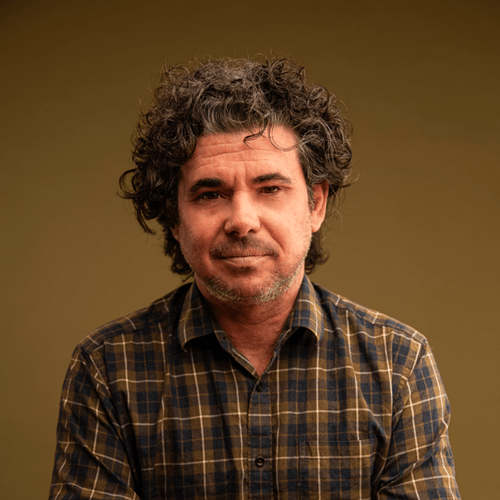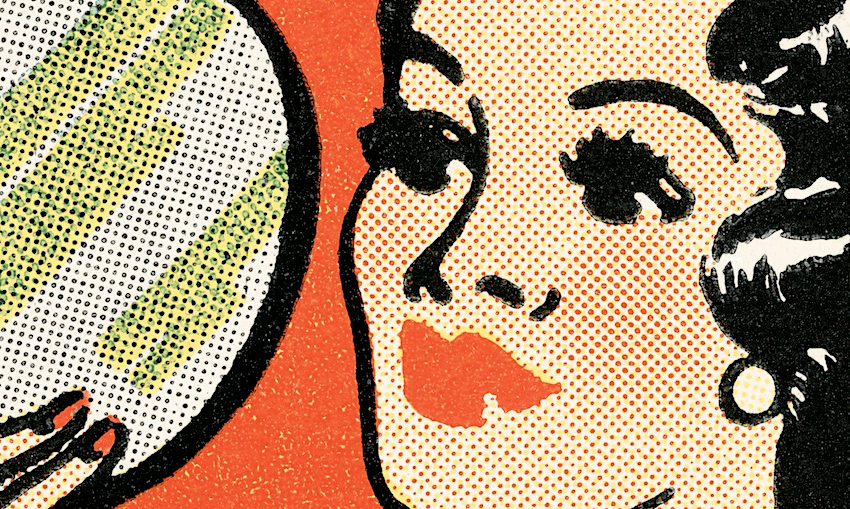Spoiler alert: it’s not because they’re stupid, says Emily Writes.
This post was first published on Emily Writes Weekly.
The other week, The Spinoff shared a first-person account of someone who fell down the anti-vax rabbit hole and managed to get out again.
I thought it was a really brave piece, but also a really useful one in helping us all understand how some mothers become anti-vax.
The writer explains how her traumatic birth left her with PTSD and postnatal depression. “My confidence in my ability to care for my son was destroyed by this experience,” she said.
It was in this vulnerable place that she was exposed to anti-vaccine rhetoric through a workmate’s wife.
In the absence of other supports, this new and vulnerable mum was “bombarded…with Facebook messages filled with links proclaiming the dangers of vaccines for babies. Every new claim or ‘study’ seemed designed to instil fear and play strongly to my insecurities as a new mother.”
She joined an anti-vax group and said it made her feel empowered instead of “helpless and inadequate”.
Eventually, the insular and selfish nature of anti-vaxxers meant this mother found it wasn’t the right community for her. She says she found a new community that helped her to eventually change her mind on vaccines.
“Funnily enough, it was another Facebook group that finally persuaded me to trust vaccines. I discovered Vaccine Talk, a group dedicated to fact-based discussion and co-founded by California-based mother Kate Bilowitz who had an experience similar to mine while seeking vaccine information on Facebook.”
Soon after reading her story I saw comments on the article as it was shared around Facebook and Instagram. They were overwhelmingly misogynistic and cruel. The mother was a “dumb bitch” and a “fucking moron” apparently. Childless men seemed to be behind most of the vicious comments that mocked her for seeking support (and yes, medical advice) from Facebook.
Their comments showed that they fundamentally misunderstood what it is like to be a mother seeking medical advice.
Here’s the reality: It can be fucking BRUTAL. And that’s the simple reason why some mothers turn to Facebook.
When my baby was born nine years ago, my midwife helped support us for longer than the usual four-to-six weeks. This would have been unpaid for her. She helped us navigate the new life we were facing with a baby that was clearly going to have medical complexities. We didn’t know then just how bad it would be.
When she had to stop her visits, I started to see just how protected I’d been by her care. I began to see how some in the medical establishment treat mothers.
As a whānau, we learned early on that my husband had to come to medical appointments in order for us to be taken seriously. If I went alone, I was treated as if I was a fretful first time mum who couldn’t tell a sneeze from respiratory distress.
When my son was hospitalised, a male doctor made a joke about how the ED is full of “hysterical mothers” before saying “it’s good you came in because there actually is something going on here”.
I had a locum tell me my anxiety as a new mother was to blame for my son’s breathing difficulties because he was “picking up on (my) nerves”. I was told repeatedly that my son had already been seen and didn’t need to be seen again – that was until he went into emergency surgery and ICU because as I knew he could not breathe.
My husband was astonished at how I was treated. But I wasn’t, as every one of my mum friends who had a child who had been hospitalised or needed medical attention had gone through the same thing.
A little while back I saw a GP and I figured since it was for a simple referral my husband wouldn’t need to attend. I was wrong. I had to call my husband and have him on speaker phone in the appointment. I now make sure I ask for a woman doctor every time I book an appointment for myself or my kids. Having my husband on the phone during appointments is still a hard habit to break though.
I went to the GP twice when my son became sick again two years ago. This time it was assumed he had anxiety (caught from me?) Nope, it was type one diabetes. He went into a diabetic coma. Spent two months in hospital. He almost died.
Mothers are often treated as hysterical, overwrought, naive and simple when they seek medical advice for their babies. This is why some women don’t mention they’re a “first time mum” so they don’t get treated like one.
Stereotypes about mothers and women are behind so much of the sexism we face when seeking medical advice. From an analysis of studies on gender bias in healthcare: “A 2018 study found that doctors often view men with chronic pain as ‘brave’ or ‘stoic’, but view women with chronic pain as ’emotional’ or ‘hysterical’. The study also found that doctors were more likely to treat women’s pain as a product of a mental health condition, rather than a physical condition. A 2018 survey of physicians and dentists arrived at similar conclusions: Many of these healthcare professionals believed that women exaggerate their pain. This was true even though 40% of the participants were women.”
These studies were in relation to women’s own care. But the treatment they experience is often the same when seeking care for their children, as they’re the ones describing symptoms.
Postnatal care is another way women experience the gender bias of the medical system. More than 55,000 people signed a petition calling for better postnatal care and rehabilitation in New Zealand last year.
The physical toll on mothers after birth is enormous. It is estimated that one in three women who have carried a baby will suffer urinary incontinence, 50% will live with some degree of prolapse and one in four live with bladder and/or bowel incontinence. One in five women report pain during sex, and the prevalence of urinary incontinence is even higher in adult Māori women at 47%.
Women who have grade 3-4 perineal tears will be referred to DHB physiotherapists for rehabilitation. However, other injuries attained in childbirth, such as during long pushing stages, or intervention (use of forceps/ventouse), tailbone injuries and pelvic floor avulsion are unlikely to be covered by ACC for rehab for those sustained injuries. These are injuries that impact women for the rest of their lives – physically, financially and mentally.
When you’re physically recovering from birth and have few options to address your injury, where are you getting emotional support?
An estimated 14% of New Zealand women will develop depression, anxiety or other mental health issues after birth. So if that’s the case – and the Ministry of Health acknowledges that – what is being done to support these mums emotionally and physically as they navigate the medical system for themselves and their children?
The pandemic has only made all of this worse. Joanne Rama, a mother of seven, a grandmother, and a proud activist in the area of Māori maternal mental health told The Spinoff last year that Covid-19 has been tough on the women she works with. She said she is used to seeing mental health disorders in roughly 10-20% of her clients; in the last lockdown she thinks that number leaped to more like 95%.
What is being done to address misogyny in the system? Have we properly looked at how mothers are treated by medical professionals? What is being done to address trust in the system?
We know we cannot rely on Facebook to remove misinformation from their platform. So what can we do? How can we protect mothers from being exploited by anti vaxxers when anti-vaxxers are filling a gap that has been left by an under-resourced and under-funded healthcare system in this country?
As a staunch pro-vaxxer who desperately needs people to vaccinate so I can protect my baby, these are the questions that keep running through my mind.
If mothers have been treated so badly by mansplaining doctors and GPs who roll their eyes at them and joke that they have “first-time-mum-itis” then why wouldn’t they turn to Facebook?
Isn’t it inevitable?
The blame here isn’t with mothers whose questions were ignored. It’s with those who wouldn’t even hear the questions to look for answers.
Anti-vaxxers will always exist, but we can change the environment that sends mothers into their clutches if we acknowledge and accept that it starts at birth, and we demand action to address it.

